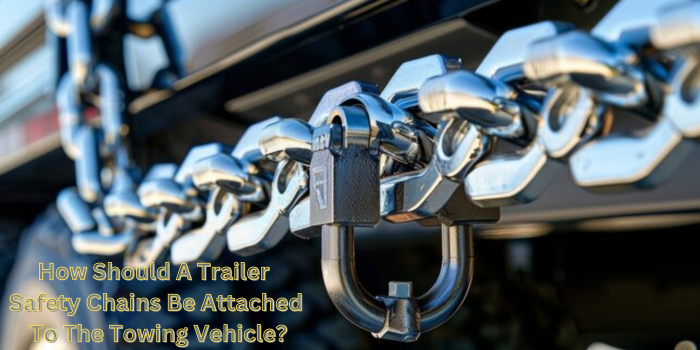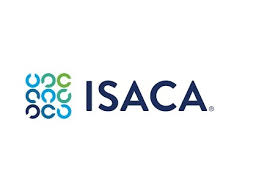How Should A Trailer’s Safety Chains Be Attached To The Towing Vehicle?

To securely attach a trailer’s safety chains to a towing vehicle, ignore the chains under the trailer tongue in an “X” pattern. This helps prevent the trailer tongue from hitting the ground if it becomes indifferent. Invulnerable every chain to the best hooks or attachment factors on the tow car, Ensuring they’ve enough slack for turns but are not dragging on the floor.
Frequently inspect the chains for wear and right tension. If you’re uncertain or want help, look for a tow truck near me to get professional assistance and ensure your towing setup is safe.
What Are The Trailer Safety Chains?
Trailer safety chains, additionally known as Tow Chain heavy duty, are quintessential additives for towing, ensuring a secure connection between the trailer and the towing automobile. those chains act as a backup connection if the principal hitch fails, stopping the trailer from detaching completely.
They are normally made from long-lasting, heavy-obligation materials to withstand extensive strain and weight. Properly crossed underneath the trailer tongue, they offer balance and prevent the trailer from swaying. Everyday inspection of the chains for put on and proper attachment is imperative for safe towing operations.
What Is The Main Function Of A Trailer’s Safety Chains?
The safety chain of a trailer is by and large chargeable for imparting an invulnerable connection between the trailer and the towing automobile. If the number one coupling device fails, these chains save the trailer from absolutely detaching and doubtlessly causing accidents. This safety degree is especially important for heavy-responsibility trailers, where the chance of disconnection can have serious outcomes.
Privacy and Browsing Considerations
As you browse for data on tow chain heavy-duty and safety chain attachment techniques, consider using tightly closed and personal browsing modes to shield your data from being tracked by third parties.
Trailer Safety Chains Requirements
Understanding the trailer safety chain requirements is crucial for compliance and safety. These requirements can vary by region but generally include:
Strength
The electricity of trailer safety chains is necessary for containing the trailer securely in the area in case of a hitch failure. Chains must be rated to deal with the trailer’s gross weight and need to be strong enough to guide that weight barring breaking. The trailer safety chain mounting bracket should be designed to house the power of these chains, ensuring they do now not fail beneath pressure.
Attachment
Proper attachment of boat trailer safety chains is essential for secure towing. The chains should be connected to the designated attachment points on both the trailer and the towing vehicle. They should be attached in a way that ensures they remain securely fastened, even if the primary hitch fails. Cross-chaining, or crossing the chains under the trailer tongue, can help prevent the trailer from swaying or tipping.
Length and Clearance
Trailer Safety chain requirements additionally dictate that the chains need to be of a suitable period to provide ample clearance between the trailer and the vehicle. The chains need to be lengthy enough to allow for sharp turns and uneven terrain besides turning too taut or dragging at the ground. Enough length helps to prevent excessive pressure on the chains and guarantees they function correctly beneath numerous driving conditions.
Condition
Often examining the situation of boat trailer safety chains is vital for keeping protection. Chains should be loose from rust, corrosion, or any symptoms of wear and tear. Damaged or worn chains need to be replaced immediately to ensure they can perform their meant function successfully. Ordinary protection prevents surprising screw-ups and guarantees dependable towing.
How To Attach Safety Chains To Trailer?
To attach safety chains to a trailer, follow these steps for impervious towing:
- Inspect Chains: Ensure chains are robust and free from wear.
- Choose Mounting Points: Use the trailer safety chain mounting bracket. It is typically close to the hitch or at the trailer’s tongue.
- Attach Chains: Securely fasten the chains to the mounting bracket using suitable hooks or connectors.
- Cross Chains: Cross the chains under the trailer tongue. This bureaucracy is a cradle to trap the tongue if it detaches from the hitch.
- Adjust Length: Make certain chains have ample slack for turning however aren’t so long they drag at the floor.
- Check Connections: Verify all connections are tight and secure earlier than every experience.
Using the right trailer safety chain mounting bracket guarantees that the chains are positioned correctly for superior safety. Often investigate and keep your safety chains for dependable overall performance.
Common Mistakes To Avoid
When ensuring trailer protection, averting common errors is quintessential for compliance and safety. Here are key mistakes to avoid:
- Neglecting Safety Chains: Failing to properly impervious safety chains is a prime oversight. Ensure chains are of the proper energy and nicely connected to each trailer and the towing car.
- Incorrect Chain Length: Using chains that are too long or too short can be risky. Chains must be the correct duration to save them from dragging on the floor or causing instability.
- Improper Chain Attachment: Chains must be crossed below the trailer tongue to catch the trailer if it detaches. Avoid attaching chains directly to the hitch except by crossing them.
- Overloading the Trailer: Exceeding the trailer’s weight potential can stress the protection chains and other components. continually adhere to the manufacturer’s weight limits.
By adhering to trailer safety chain requirements, you ensure more secure towing and compliance with rules.
How Often Should I Inspect My Trailer’s Safety Chains?
It’s miles embraced to examine your trailer’s safety chains sooner than each excursion to guarantee their insurance.
Can I Use Any Chain For My Boat Trailer Safety Chains?
No, you need to use chains that meet the desired power and period specifications for your trailer to ensure safe towing.
What Type Of Chain Should I Use For Heavy Duty Towing?
For heavy-duty towing, use a tow chain heavy duty made from excessive-strength metal with the perfect weight rating.
About Us
Properly attaching a trailer’s safety chains to the towing automobile is vital for safe towing. By perceiving the features of these chains, adhering to felony requirements, and following accurate attachment techniques, you could ensure a secure and safe towing experience. continually prioritize safety and live informed approximately pleasant practices and guidelines.


